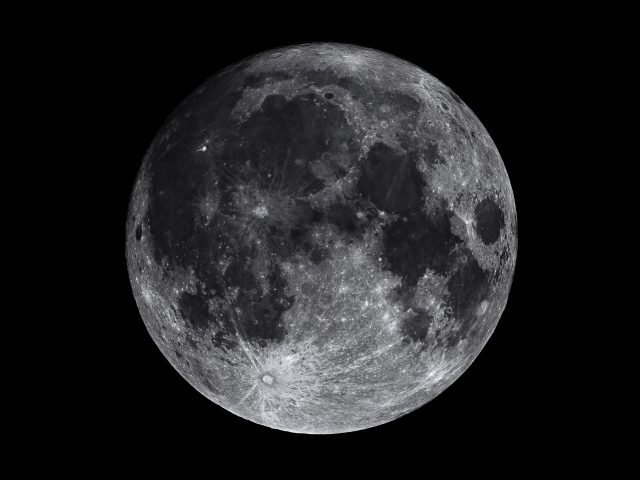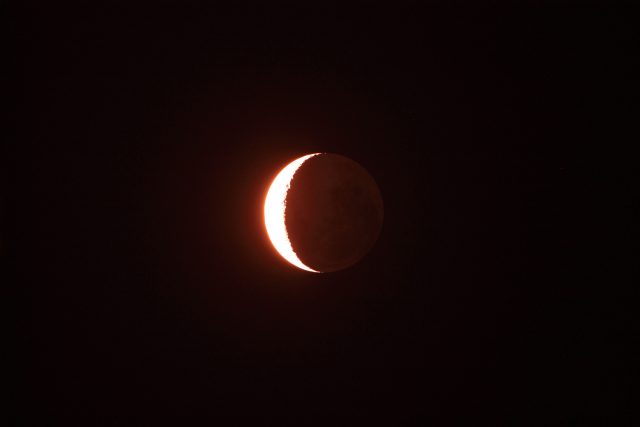
The moon was low and setting in the west when I took this shot. Earth-shine was very pretty and I tried to capture how it looked, but the bright part always gets over-exposed. But, you get the idea. 🙂

This is six frames taken at 1/800 sec @ ISO 100 using the TV-85/Canon T3 combo. I did an offset removal on each frame in IRIS and then median stacked them. One round of sharpening and wavelets in IRIS, too, but that was it. Contrast adjustment in PS and then posted here.
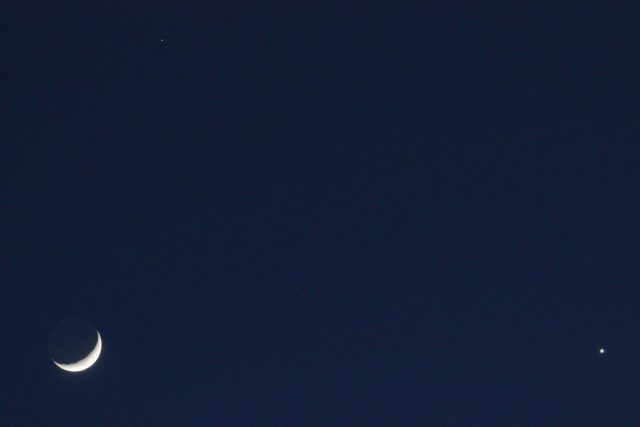
A beautiful conjunction of the moon and two planets made the last evening of Jan 2017 quite nice. The Moon joined Venus and Mars on this evening and I just had to get some shots.
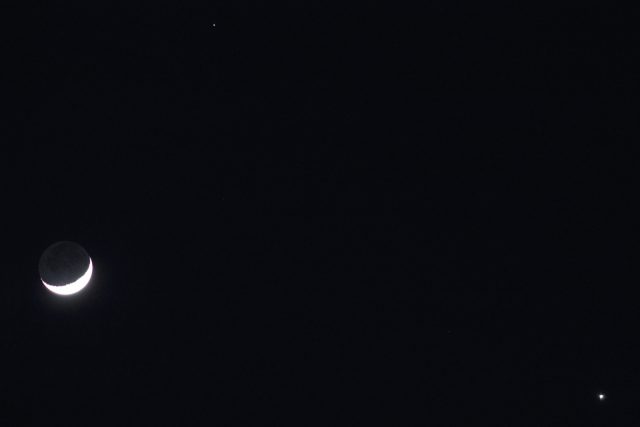
I could have used a tripod for these, but I took the images by propping the camera on the top of a car. Consequently, I had lots of rejected images due to motion blur. But, luckily, I got a three steady ones that were good enough to post. The forth image below was a repair job, but it came out OK after correcting it for my unsteady hands. 🙂
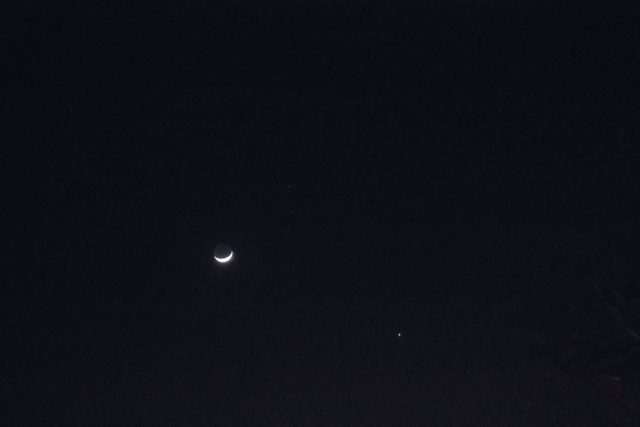
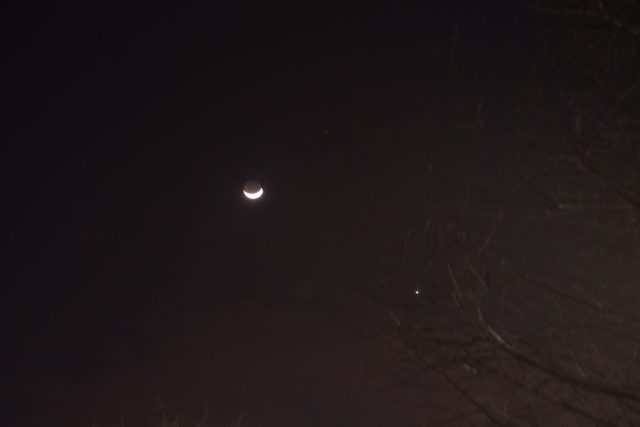
These last two are actually composites. The one right above had motion blur and as mentioned previously, I was able to fix it. But, fixing it messed up the trees. So, I had to composite the good trees back in from the original. In the second image above, the moon was replaced with a better version from the 200mm lens.
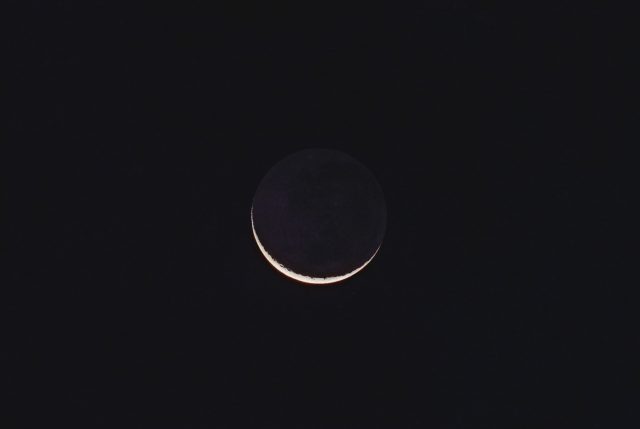
On Jan 29, 2017, a two day old moon was in the sky and I shot it first thing before it sank too low to image. This is somewhat of an HDR image in that I took a series of 4 exposures, long to short, to try and get the earthshine and details in the crescent. I aligned and stacked them in PS with about a 50% blend for each exposure.
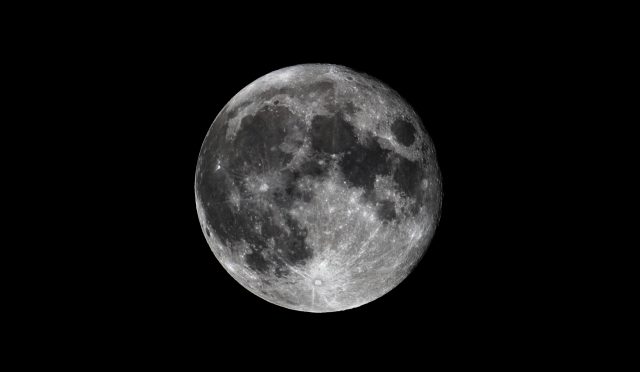
A close crop of the moon taken with the Canon T3 and TV-85 combo. This is straight out of the Canon DPP software. I cropped it in PS, but didn’t do any other modifications to it.
This was a shakedown imaging session to test my mount, laptop and new Bluetooth telescope interface. Unfortunately, the test failed as the Bluetooth connection kept breaking. I had tested it a few nights before with no problems, but something I installed afterward must have screwed it up. It is back to the drawing board, I guess. 🙁

Here’s an image of the moon setting behind tree branches that I created recently. Of course the nearly full moon was way overexposed in the image taken for the background, but I overlayed another shot taken at a much shorter exposure and blended the two together until it looked somewhat natural.
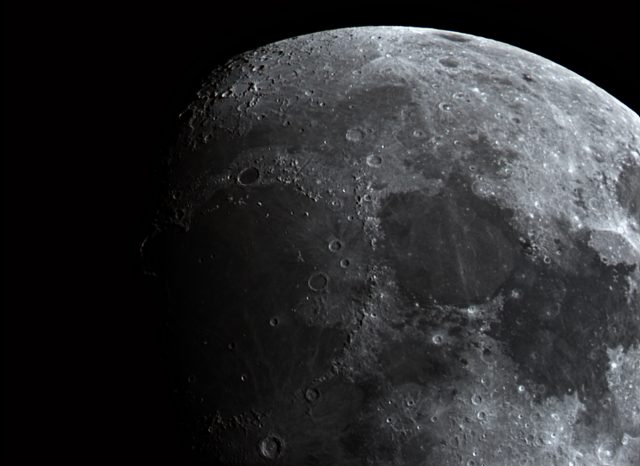
It is not much of an image, but it was done with my trusty TV-85 and my Atlas EQ-G tracking mount, instead of that dobsonian I’ve been stuck using.
I managed to get those two items back into my possession recently. Unfortunately, the Atlas mount needed lots of work just to get it barely running again. There is a burnt out motor on one of the drive axis. It was the RA motor, so I swapped it with the DEC motor to just get the tracking going. During testing I was able to take a one minute video with decent tracking, which yielded just over 290 frames with the planetary cam I used.
I ordered some stepper motors for cheap from Amazon to replace the originals, which are both shot. I’ll also have to get some new bearings for the mount and it needs a new power switch. I might just get a hypertune kit with the ceramic bearings and possibly a belt-drive upgrade. It definitely needs some TLC before it will be able to do any serious imaging. 🙁
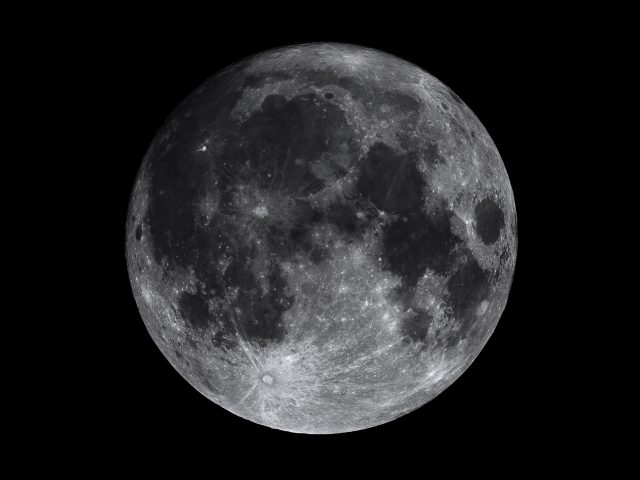
The Supermoon of November 2016 was set to be the biggest of the year. I tried to get a good mosaic of it, but the seeing was poor on this morning, so it is not quite as sharp as I would have liked. The mosaic took about 30 panels to construct and lots of time and effort to put together.
I took this on the morning of the 14th, so there was a chance the seeing was better in the evening when the moon still looked full, but I was too tired to go another round by that time. So, I worked through several iterations of the data I already had and came up with what I think is a reasonably good image.
I also created an enhanced image that is basically just sharpened more. A couple of seams are more obvious in this version, but I figure not bad enough to spend too much time on trying to correct:
